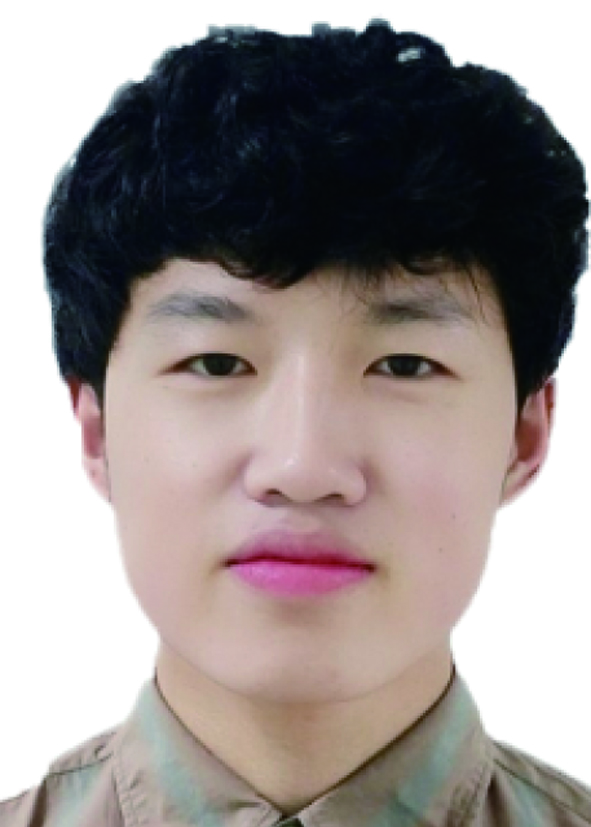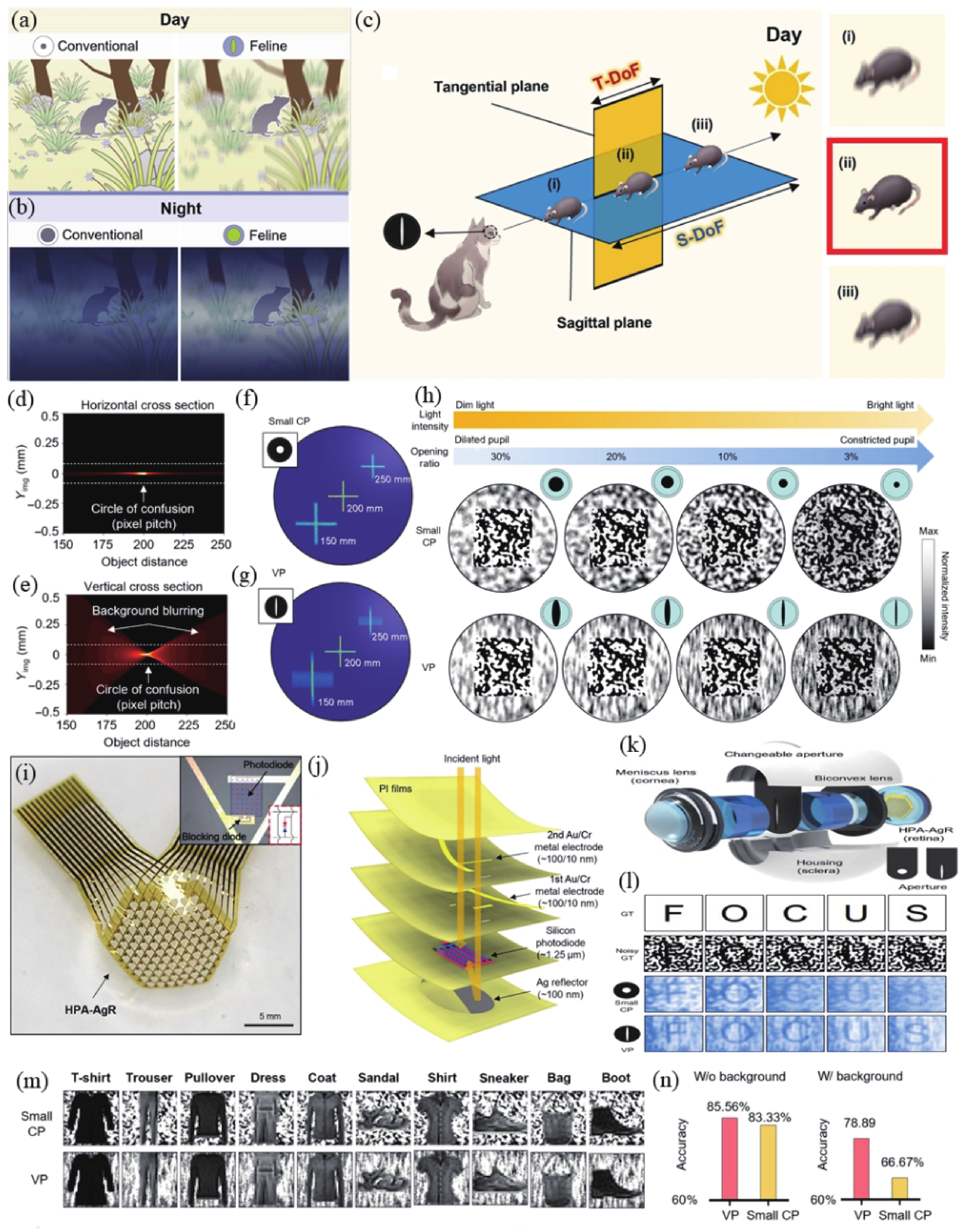| Citation: |
Shengqiang Zhang, Zhuoran Wang. Artificial cat eye camera for objects detection against complex backgrounds and varied lighting[J]. Journal of Semiconductors, 2024, 45(12): 120401. doi: 10.1088/1674-4926/24090053
****
S Q Zhang and Z R Wang, Artificial cat eye camera for objects detection against complex backgrounds and varied lighting[J]. J. Semicond., 2024, 45(12), 120401 doi: 10.1088/1674-4926/24090053
|
Artificial cat eye camera for objects detection against complex backgrounds and varied lighting
DOI: 10.1088/1674-4926/24090053
More Information
-
References
[1] Jia X, Tong Y, Qiao H M, et al. Fast and accurate object detector for autonomous driving based on improved YOLOv5. Sci Rep, 2023, 13, 9711 doi: 10.1038/s41598-023-36868-w[2] Kim M S, Kim M S, Lee G J, et al. Bio-inspired artificial vision and neuromorphic image processing devices. Adv Mater Technol, 2022, 7, 2100144 doi: 10.1002/admt.202100144[3] Kim M, Lee G J, Choi C, et al. An aquatic-vision-inspired camera based on a monocentric lens and a silicon nanorod photodiode array. Nat Electron, 2020, 3, 546 doi: 10.1038/s41928-020-0429-5[4] Thiele S, Arzenbacher K, Gissibl T, et al. 3D-printed eagle eye: Compound microlens system for foveated imaging. Sci Adv, 2017, 3, e1602655 doi: 10.1126/sciadv.1602655[5] Ran W H, Wang Z R, Shen G Z. Artificial hawk-eye camera for foveated, tetrachromatic, and dynamic vision. J Semicond, 2024, 45, 090401 doi: 10.1088/1674-4926/24060010[6] Lee M, Lee G J, Jang H J, et al. An amphibious artificial vision system with a panoramic visual field. Nat Electron, 2022, 5, 452 doi: 10.1038/s41928-022-00789-9[7] Garcia M, Davis T, Blair S, et al. Bioinspired polarization imager with high dynamic range. Optica, 2018, 5, 1240 doi: 10.1364/OPTICA.5.001240[8] Banks M S, Sprague W W, Schmoll J, et al. Why do animal eyes have pupils of different shapes? Sci Adv, 2015, 1, e1500391 doi: 10.1126/sciadv.1500391[9] Ollivier F J, Samuelson D A, Brooks D E, et al. Comparative morphology of the tapetum lucidum (among selected species). Vet Ophthalmol, 2004, 7, 11 doi: 10.1111/j.1463-5224.2004.00318.x[10] Kim M S, Kim M S, Lee M, et al. Feline eye-inspired artificial vision for enhanced camouflage breaking under diverse light conditions. Sci Adv, 2024, 10, eadp2809 doi: 10.1126/sciadv.adp2809[11] Liang Y G, Wang Z R, Shen G Z. CMOS-level mega-pixel organic camera chips made of photocrosslinked photovoltaic nanocells. Sci China Mater, 2024, 67, 3043 doi: 10.1007/s40843-024-3050-5[12] Wu F M, Liu Y X, Zhang J, et al. Highly stretchable and high-mobility simiconducting nanofibrous blend films for fully stretchable organic transistors. Sci China Mater, 2023, 66, 1891 doi: 10.1007/s40843-022-2331-8 -
Proportional views





 Shengqiang Zhang received his bachelor degree in physics at Beijing Institute of Techonoly in 2022 and is now a graduate researcher in Integrated Circuit Engineering, Beijing Institute of Technology. His research interests are flexible photodetectors and biomimic vision.
Shengqiang Zhang received his bachelor degree in physics at Beijing Institute of Techonoly in 2022 and is now a graduate researcher in Integrated Circuit Engineering, Beijing Institute of Technology. His research interests are flexible photodetectors and biomimic vision. Zhuoran Wang received his PhD in the department of Mining and Materials Engineering from the McGill University, QC, Canada in 2017. In 2019 he joined the Institute of Photonic Sciences (ICFO), Barcelona, as a postdoctoral/Marie-Curie research fellow. He is currently a professor at the School of Integrated Circuits and Electronics, Beijing Institute of Technology, Beijing. His current research focuses on flexible and infrared optoelectronic sensors for biomimic vision.
Zhuoran Wang received his PhD in the department of Mining and Materials Engineering from the McGill University, QC, Canada in 2017. In 2019 he joined the Institute of Photonic Sciences (ICFO), Barcelona, as a postdoctoral/Marie-Curie research fellow. He is currently a professor at the School of Integrated Circuits and Electronics, Beijing Institute of Technology, Beijing. His current research focuses on flexible and infrared optoelectronic sensors for biomimic vision.
 DownLoad:
DownLoad:














